Historical background
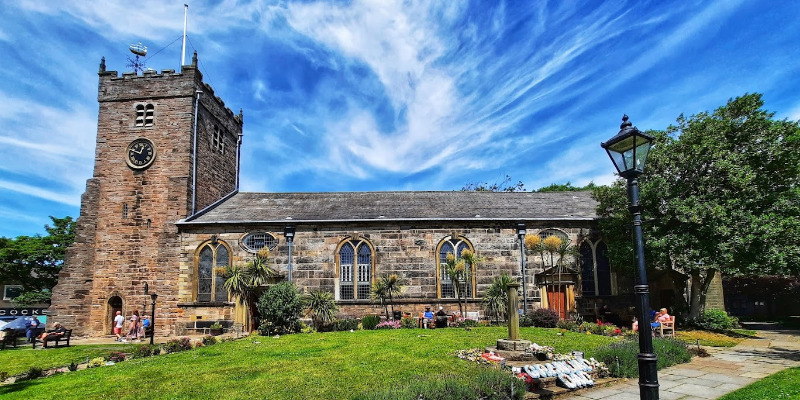
A video presented at our Open Church event compiled by David & Sarah Dewey (Oaks Drones)
The earliest documentary reference to a church at Poulton-le-Fylde occurs in 1094, when Roger de Poitou gave it (together with others at Kirkham, Melling in Lonsdale, and elsewhere) to the new priory to St Mary at Lancaster. The medieval and later dedication of the church to St Chad, the 7th century founder and first bishop of the diocese of Lichfield, is a good indication that the church was in fact of pre-Conquest date, since it is extremely unlikely that if the 1094 church was a new Norman foundation it would have been dedicated to one of the most important figures of the Saxon church.
St Chad's church is in the Diocese of Blackburn and is one of the largest parishes in the Diocese. In the past the Poulton parish stretched from the River Wyre in the north to Squires Gate Lane in the south where it met the parish of St Cuthbert's, Lytham.
At the time of the Reformation the Fleetwood family were made patrons of the church in 1538. Set in to the south wall of the church is the door to the Fleetwood Hesketh vault. Around thirty members of the family are buried there, the first - Richard Fleetwood - in 1699. His name and the date are carved into the stone above the door. St Chad's is unusual in that it has six hatchments, showing the coats of arms of members of the Fleetwood Hesketh family.
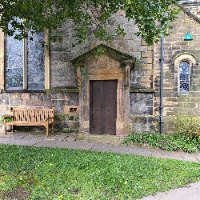
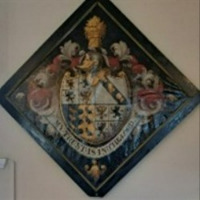
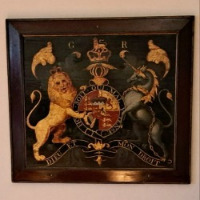
These were painted and carried in a funeral procession then hung in the parish church. One of the Fleetwood family hatchments being returned to the church after cleaning and restoration undertaken by Pat Allois. Pat worked on each of the six hatchments and returned them to their original condition. St Chad’s is extremely grateful to Pat for her work - she charged only for materials.
The tower dates from the 17th century, the exact date of building is unknown. There are eight bells in the tower.

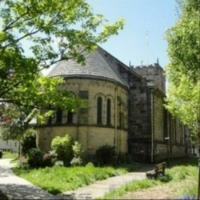
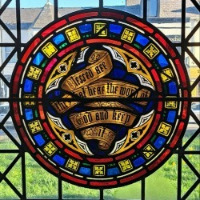
The semi-circular apse was added in 1868 and simply built onto the east end of the church. Styles of worship had altered and it was important for the altar to be set apart from the main body of the church. The building of the apse was paid for by the Vicar of the time the Revd Thomas Clarke. This is one of four round windows which had to be taken out of the east wall when the apse was built. They are now in a window on the staircase which leads to the gallery.
The pulpit is made up of a series of panels and dates from the early eighteenth century. During alterations to the church in the 1880s this pulpit was taken apart and hung in panels on the wall. It was replaced by a wrought iron pulpit which was very fashionable at the time. In 1955 alterations took place again and the wooden pulpit replaced the one of wrought iron.
Although Victorian antiquarians wrote that the church was demolished and rebuilt in 1751, research based on new evidence which has come to light in recent years suggests that the church was not completely demolished but rather drastically re-ordered inside and the outer walls, which are built of red sandstone, were faced with grey ashlar at the same time.
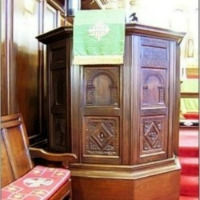
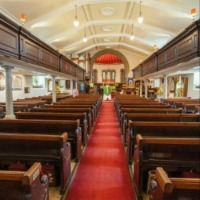
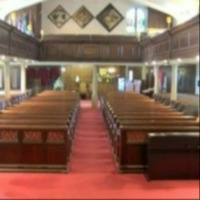
Inside St Chad’s is a typical church of the mid 18th century. The sermon was the most important part of the church service so the pulpit would be in the middle of the church, with galleries so people could look down on the speaker. The altar was against the east wall and there were no choir stalls. Churches like this are often called ‘Georgian preaching boxes’
Since the 1750s when St Chad’s was redesigned an apse has been added to the east wall and the Georgian box pews have been removed from the ground floor. The galleries remain.
Nevertheless, the first-time visitor to the church today might well be surprised to learn of its ancient beginnings, since St Chad's appears to be essentially a Georgian church - a simple rectangular nave of grey ashlar stone, with a 17th century tower at the west end and a Victorian apse at the east end. Inside there is an attractive range of 18th century furnishings and woodwork.
In contrast with other ancient parish churches of the Fylde - St. Michael's, Churchtown and Woodplumpton, for example - St Chad’s seems to retain virtually nothing of its medieval past. There is no old stained glass, no ancient font, no sedilia where the priests sat or piscina where the vessels were cleansed during the eucharist, no old pews with misericords, no ancient pillars or stone carvings or wall paintings.
Along with the tower, there are a few traces of the 17th century in the church. Fixed to the wall behind the choir stalls are some 17th century grave memorial plates, and in the choir vestry two plaques commemorate the long service of the vicar Peter White (1622) and the initials of the churchwardens of 1638. The apparent absence of any other earlier work would be explained if the visitor read in the older histories that in 1751 the medieval red sandstone building was completely demolished (presumably with the exception of the tower) and a new church erected in a style fashionable at the time. The visitor would conclude that the work in 1751 must have been so thorough that virtually all trace of the old church was erased.
But all is not what it seems. Recent exciting discoveries made during repair and restoration work, and a new look at the sources upon which the Victorian historians based their claim that the church was 'levelled with the ground' in 1751, have resulted in the rewriting of the history of the parish church. Contrary to appearances, St Chad's is still, underneath the Georgian gloss, a medieval church.
Repair work in he 1990s brought to light the red sandstone of which the church is built - the grey ashlar outside is simply a cladding put on in the 1750s to ‘modernise’ the appearance of the church. The discovery that the body of the church actually consists of red sandstone, which - according to Victorian antiquarians was the fabric of the medieval building, raised the question as to whether the rebuilding in 1751 ever in fact took place or whether it was simply a substantial repair together with the resurfacing of the exterior of the church in large grey ashlar blocks. Recent research into the documentary evidence now suggests that this the case - the church was re-ordered and refaced to make the ancient building appear more fashionable and more tidy, but the basic structure of the church was retained.
The fact that the main building of the church is now known to be of red sandstone, not of ashlar, and that the probable line of the medieval roof survives, makes it almost certain that the work of 1751 involved adapting the existing structure It was very much cheaper to do this, retaining the original walls, door spaces and window spaces. The superficial absence of medieval work and fabric of the 16th and 17th centuries is deceptive, for there is more than meets the eye.
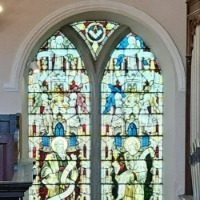
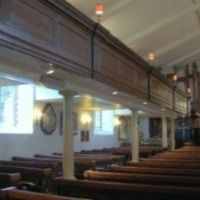
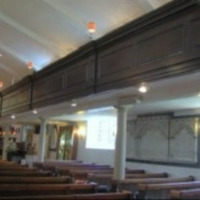
The present windows, which reach from about five feet above the ground almost to the roof must surely have been in existence before the erection of the side galleries, which are simply attached (rather precariously) to the wall by beams, leaving a large gap between the galleries and the windows.
The four main windows, two each in the north and south walls, are not in alignment with each other. if the church had been newly-built to a modern design in 1751, the windows and galleries would have been designed as an integral part of an overall plan, rather than (as is the case) having the galleries clumsily crossing over the window space and blocking much light. In the 19th century three small oval windows, one on the north side and two on the south, had to be inserted high in the walls to admit more light to the gallery areas.
At the back of the church, now forming part of the choir vestry, are a carved wooden pew screen (and a small door, both) dating from the 17th century. They originally formed part of the family pews of the Fleetwoods and Rigbys, and were sited near to the chancel steps in a position now occupied by the choir stalls. In the mid 1880s, when the orignal box pews were being replaced, two sides of the Fleetwood pew screen - with the Rigby door inserted - were moved to its present position (to make an entrance to the newly-formed baptistry in the south-west corner of the church).
It seems very improbable that this ancient remnant of the earlier building would have been saved and re-used in a total reconstruction in 1751, not least because it would have been extremely unfashionable by the mid- 18th century. As late as the 1870s a local newspaper journalist, writing about St Chad's, referred to the box pews, and the Fleetwood family pew in particular, as looking like 'a cross between a railway carriage and a gondola', and by 1751 the early 17th century woodwork would have seemed laughably old-fashioned and out of keeping with the new design of the church. It is more likely, therefore, that the older woodwork survived because the work in 1751 involved extensive alterations and renovation rather than total destruction of the church itself.
The full article from which the above is taken was published in ˜The Lancashire Local Historian, the Journal of the Lancashire Local History Federation. vol 10 1995 Christine Storey.